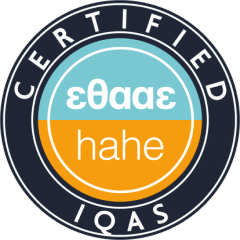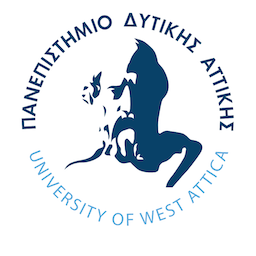Learning outcomes
The strength of this course is its integrated nature as it incorporates the wide variety of uses photography offers. Students will study key aspects of photography including also analysis of the techniques, the materials and the special equipment needed. As a result students will extend their knowledge about imaging and expand their awareness of the latest developments regarding topics such as:
- Understanding the unique features of photographing a reality that is not directly perceptible by the human eye e.g. very small objects (optical microscope) or very distant objects (telescope).
- Exploring methods of photographic imaging in the wavelength range invisible to the human eye (infrared, ultraviolet).
- The ability to create photographic images of events whose rapid evolution cannot be immediately perceived.
- Understanding the mechanisms & devices that provide an additional, spatial dimension in flat films of special construction (holographic imaging)
General Competences
- Search for, analysis and synthesis of data and information, with the use of the necessary technology,
- Decision making,
- Team work
- Criticism and self – criticism
- Production of free, creative and inductive thinking.
Course Outline
THEORY
- Macro photography, calculations of relative magnifications
- Optical microscope, principle of operation, Photography through an optical microscope (transmitted, reflected light)
- Photorefractive effect, Interference colors
- Optical telescope, principle of operation, astrophotography
- Coherent light, laser beam characteristics, properties
- Imaging holography, principle of operation, Holograms (Reflection, Transmission), properties of holograms
- Stroboscope, Stroboscopic Photography, applications
- Photography in Infrared, Ultraviolet
- Electrophotography
- Thermographic imaging through a camera (isothermal curves)
LABORATORY (Exercises, indicative reference of titles)
- Theoretical exercise (computational)
- Characteristics of a beam of light from a Laser device
- Optical fibers, measurements of characteristics, image transfer
- Newton rings, anti-reflective lens coatings
- Photography by means of an optical microscope
- Holographic devices (hologram recording), Reflection, transmission holograms
- Astrophotography
The laboratory exercises are performed with modern experimental equipment such as: Optical microscopes, telescopes, vibration-isolated table for holographic imaging, optical fibers, stroboscopes, monochromators, luxmeters, etc.
RECOMMENDED BIBLIOGRAPHY
- SCIENTIFIC PHOTOGRAPHY AND APPLIED IMAGING, Sidney F. Ray, Focal Press (2015)
- CAMERA TECHNOLOGY, Goldberg, Acad. Press, 1992
- MANUAL OF PRACTICAL HOLOGRAPHY, G. Saxby, 1991
- HOLOGRAPHY FOR PHOTOGRAPHERS, J. Iovine, 1997
- ASTROPHOTOGRAPHY FOR THE AMATEUR, M. Covinghton
- PHOTOGRAPHY THROUGH THE MICROSCOPE, Kodak ed.
- THE IMAGE PROCESSING HANDBOOK, John C. Russ, 2006


